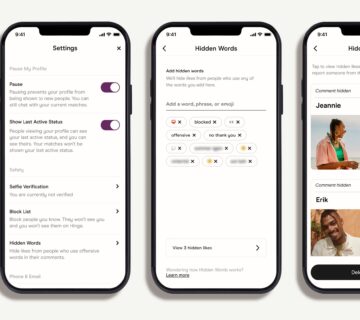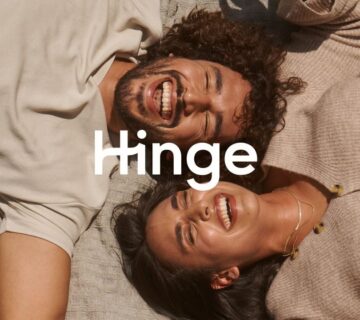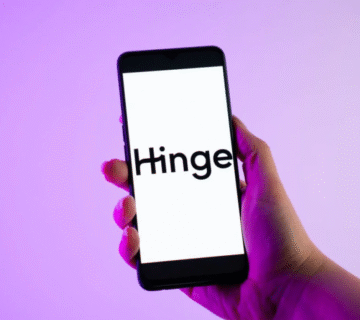Online dating has become a language of profiles, prompts, and – perhaps most tellingly – emojis. Among these, the “smiley face” is one of the most universal and abundant icons on Hinge.co in 2025. But what does a smiley face mean on Hinge? Does it signal friendliness, flirting, happiness, or something subtler? If you’ve wondered this as either a sender or recipient, you’re not alone.
What Kind of Smiley Face Are We Talking About?
The umbrella term “smiley face” can actually refer to several emojis, each with its own flavor:
-
Slightly Smiling Face
-
Smiling Face with Smiling Eyes
-
Beaming Face with Smiling Eyes
-
Upside-Down Face
-
Grinning Face
-
Winking Face
On Hinge.co, these smileys show up in profile prompts, photos, and especially in messages. Each carries nuanced meaning, so let’s explore what they often signify in a dating context.
The Core Meaning: Positivity, Openness, and Approachability
For most Hinge users, a smiley face in a message or on a profile is a sign of friendliness. It signals:
-
You’re approachable and want to come across as warm
-
You’re open to a positive, lighthearted interaction
-
You want to diffuse tension, keep things playful, or respond to humor positively
Research from emoji analysts and dating experts confirms that smiley faces like and are widely interpreted as cues for “content,” “happy,” “genuine,” or “safe to talk to”. In fact, women who smile in their profile pictures receive up to 76% more likes than those who don’t.
Subtle Differences: Which Smiley Is Which?
-
Smiling Face with Smiling Eyes: Expresses genuine happiness, warmth, and positive vibes—useful for showing appreciation or contentment.
-
Slightly Smiling Face: A bit more reserved, often just a gentle, polite sign of friendliness or agreement.
-
Beaming Face: Indicates excitement or high-spirited positivity—good for enthusiastic reactions.
-
Upside-Down Face: Implies playfulness, irony, or goofiness. In dating conversations, it often means someone is teasing, joking, or being self-deprecating.
-
Wink: Flirtation or inside-joke territory—winks usually add a sense of cheekiness or shared secret.
-
// Big Grins and Laughs: Used to show reactions to something funny, they keep the mood upbeat.
On Hinge.co, you’ll see these in everything from prompt answers (e.g., “Ideal first date: pizza and people watching “) to messages (e.g., “That story made me laugh so hard “).
When Is a Smiley Flirty, and When Is It Just Friendly?
Context is everything. Here are some scenarios:
-
After a joke: If you told a joke and received a , it’s polite; a , it’s genuine laughter. If you get a , they might be flirting back.
-
After a compliment: in response to a compliment typically means “thank you” and gratitude; may be a sign to escalate flirtation.
-
Casual greeting: “Hey there ” is just friendly and open.
A “smiley face” is rarely a rejection—rather, it encourages continued positivity or is used to keep the conversation comfortable and non-threatening.
Smiley Face in Hinge Profile Photos: What’s the Impact?
Not just in text, smiles in profile photos matter a lot. According to Forbes, women on Hinge who smile and show teeth in their pictures get 76% more likes, and men who smile (without showing teeth) are 43% more likely to receive likes compared to those who don’t smile. Real, authentic smiling makes you more approachable and suggests you’re fun and easy to be around.
What Should You Do If You Get a Smiley Face from Someone?
-
Respond in kind if you feel comfortable.
-
Match energy with positivity; don’t ignore the friendly vibe.
-
If you like the person, reciprocate with a smiley, a playful emoji, or a fun comment.
-
If you’re not interested, a polite smiley can also be a gentle way to keep things light as you disengage or steer the conversation.
Beware of “Emoji Overload”
While smileys are almost always positive, don’t use emojis to avoid direct communication. Overusing them—especially in the early stages of chatting—may seem evasive or lacking in substance. According to advice from dating coaches and social media experts, balance is key. Sprinkle, don’t flood.
Smiley Face and Safety: Is It Ever a Red Flag?
Generally, smileys aren’t a cause for concern. But over-the-top use of wink or tongue emojis, especially if the conversation is not yet flirty, can feel forced or insincere. Trust your instincts: genuine connections use emojis to add nuance, not to replace real talk.
Best Practices for Using Smileys on Hinge
-
Smile in your profile photos for maximum approachability.
-
Use smileys to show warmth, but let them complement your genuine words.
-
Recognize emoji context—different smileys, different subtexts!
-
Don’t read too deeply into a single emoji; friends, daters, and flirts alike use smileys interchangeably.
Conclusion
On Hinge.co in 2025, the smiley face is more than a digital doodle—it’s a tool for connection. Use it to convey friendliness, openness, and a spark of joy, but always remember: real chemistry starts with honest words, clear intentions, and maybe just a bit of emoji-enhanced charm. Smile on, and your Hinge.co experience will be richer for it.








[…] Read More: What Does the Smiley Face Mean on Hinge.co? A 2025 Guide to Interpreting Smiles and Emojis in Online… […]